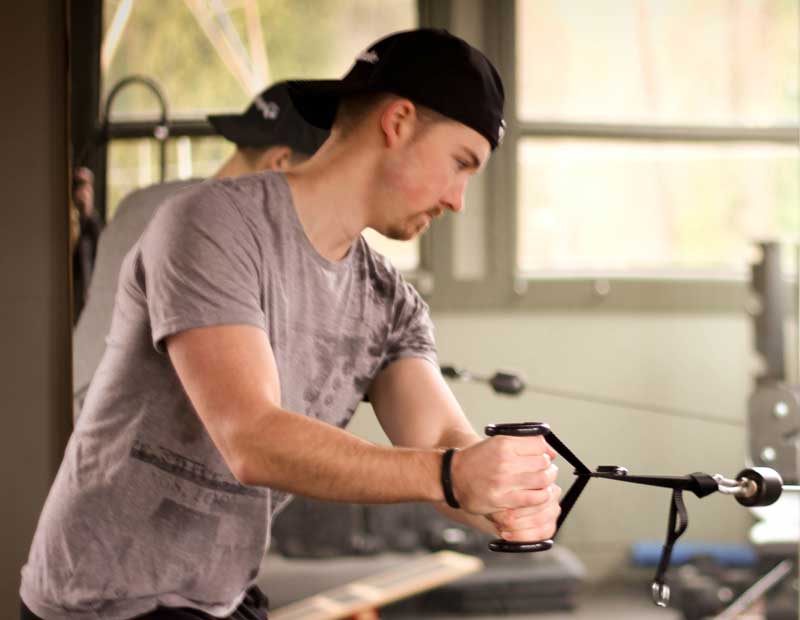ABOUT

Jeff DeBou Golf
My Struggle from Injury and Frustration to Finding Power and Consistency to Successfully Compete at a Professional Level…
How My
Experience
Can Help Others
I have played golf since I was 3 years old. In my career, just like any other golfer who plays the game, I have experienced peaks and valleys. The most significant valley occurred in 2012 when I ruptured the L5S1 disk in my lower back, similar to Tiger Woods’ first back injury, and was forced out of the game for nearly a year. This was when it really clicked in that the technique I was using to swing a golf club was not natural for my body, and it was even putting my long term health in jeopardy. Leading up to this injury, my game had been in decline. My goal was to become a professional golfer and I had sought out the help of an instructor to help me improve. Unfortunately, no matter how well I seemed to do what had been recommended, it was clear that I had lost the club head speed that had once come so naturally, despite feeling like I was swinging harder then ever. In addition, I had been developing serious accuracy issues which saw me missing fairways drastically left and right. It had gotten to the point where golf was stressful and demoralizing, rather than fun and invigorating.
As I spent the year waiting for things to fully heal up after the surgery, I realized that if I was ever going to play golf at an enjoyable level again, I was going to have to make some changes. Additionally, I absolutely had to ensure that my technique wasn’t going to lead me on a path to more injuries. From this point on, I became completely dedicated to this goal. I began to obsessively study the golf swings of the elite ball strikers in the PGA and LPGA tours. But I wasn’t satisfied with just statistical data and conclusions based on ‘tour averages’. I was interested in using my own eyes to meticulously study the physical movement patterns of the elite players on tour. I believed, and still do, that the habits of these elite players were and are being misrepresented in many modern instruction theories that are formulated by drawing conclusions based on the study of ‘averages’. Thankfully, the invention of high definition slow motion recording really allows one to explore the specific movements that are present in all highly efficient golf swings. Through a substantial investment of time and energy, I developed a thorough understanding of the common movements found in the elite that lead to a powerful, repeatable, and SAFE golf swing.
As I started to develop an ability to really understand how the golf swing works, my surgeon eventually gave me clearance to start playing again, and I began to work on rebuilding my game. While it was intimidating at first trying to start over again, things really started to improve as I worked at it. What’s more, despite making some huge changes to my technique, everything seemed to feel more natural. Soon after, I started seeing significant results. A club head speed that had dipped as low as 104 mph before my injury could now be cranked up around 114 mph. As a result, my driver ball speed jumped from around 153 mph to peaking as high as 170 mph (average ball speed for PGA tour players is 167 mph so I’m back up there). Most importantly though, despite higher force being applied, my post-op back remains healthier than ever, and the direction of my ball flight continues to be far more predictable. I am back to enjoying the game a lot more like I did when I was younger, and I am committed to helping others who are seeking the same path of improvement. Below is a video of me enjoying the results of the effort I put in to establish an understanding of what it takes to perform a fundamentally powerful, consistent, and safe technique for the full swing.
Outside Golf
Besides my love for golf, I enjoy playing basketball and softball. I am a big fan of poker, writing, sushi, and Kobe Bryant. I am also passionate about all things science. I have a Bachelor’s Degree in Chemistry from the University of British Columbia where I enjoyed the opportunity to study chemistry, physics and quantum mechanics. I have pursued a lot of interesting and challenging fields of study in my life. Along the way, I have enjoyed experimenting with different tools, theories, and strategies for effective learning and comprehension. Many of these ideas (the ones that work at least) have found their way into my teaching and coaching philosophy.
